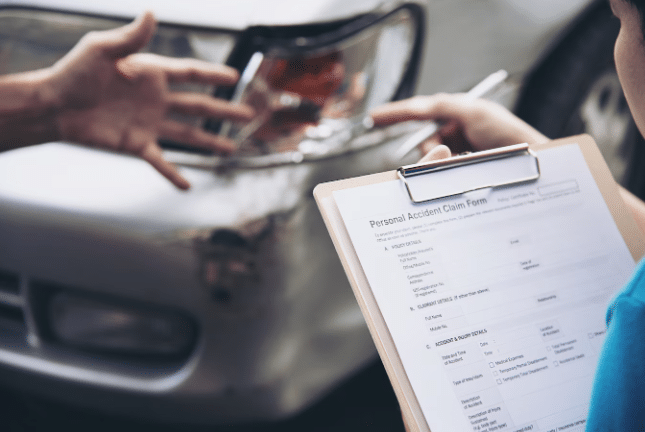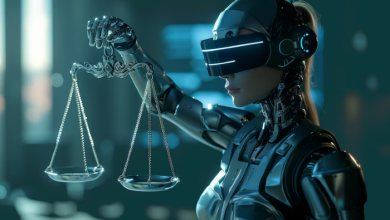
In a car accident litigation, physical evidence doesn’t always reveal what the driver was thinking. It can show how the crash occurred, but not whether the driver saw the hazard, had time to react, or was distracted, tired, or dealing with poor visibility.
Through human factors research, experts look at how people respond in real-world situations, how they process information, how fast they react, and what influences their decisions. These insights help attorneys explain actions that might otherwise seem confusing or careless. Whether you’re defending a driver or representing a victim, understanding this behavior can add clarity to your case.
In this post, we’ll walk through how human factors research can support your case, no matter which side of the courtroom you’re on.
What is Human Factors Research?
In human factors research, experts study how people interact with their environment, including roads, vehicles, signs, and other drivers. Below are the areas it focuses on.
Perception-Reaction Time
This is the time it takes for a driver to detect a hazard and begin to react. Even in perfect conditions, that delay can last several seconds, enough to change the outcome in high-speed driving.
Visibility at Night
Low light, poor weather, and headlight glare can all limit a driver’s visibility on the road. Experts consider whether the hazard was even visible before the crash.
Expectancy
Drivers react quickly and better to hazards they anticipate. If something unexpected shows up where drivers don’t normally see danger, even a focused driver might not respond in time.
Fatigue, Distraction, and Visual Clutter
Tiredness, phone use, and visual distractions can slow down how a driver processes and reacts to what’s happening.
These factors help paint a picture of what the driver was dealing with before the crash, something physical evidence alone can’t always show.
What Most People Get Wrong About Driving
Most people drive, which means most jurors bring their assumptions into the courtroom. But those day-to-day experiences don’t always match what happens in a high-stakes crash. Human factors research helps clear up these misunderstandings by showing how drivers perceive and respond in real-world situations.
Here are some common myths human factors research helps clear up:
“Drivers Can Spot a Person Instantly at Night”
Visibility at night is limited, even with headlights. A pedestrian might not be visible until it’s too late to react.
“If You’re Going 40 mph, You Can Stop in Time”
Stopping distance depends on many factors: perception-response time, road conditions, and how soon the driver even noticed the hazard.
“They Didn’t React, So They Weren’t Paying Attention”
Even an alert driver can react slowly if they’re tired, distracted, or caught off guard.
Human factors research shows what a typical driver would have seen, expected, or had time to do. And it’s just as helpful for plaintiff attorneys as it is for the defense.
Situations Where Driver Behavior Needs Explaining
Crash experts use human factors research to fill in gaps where the facts aren’t clear.
Nighttime Crashes
In nighttime crashes, seeing clearly in the dark isn’t always possible. Experts ask these questions to understand what the driver could realistically do:
Was the Hazard Visible at All?
They review lighting, distance, and contrast to see if the hazard was even visible before the crash.
How Much Time Did the Driver Have?
Even if the hazard was visible, crash reconstruction experts look at how much time the driver had to recognize it and respond.
Was the Response Time Reasonable?
They compare what the driver did to how most people react in similar situations.
These insights are critical when the other side argues with hindsight, assuming the driver had more time or awareness than they did.
2. Sudden Hazards
Crashes can happen in an instant. Even a focused driver might not have enough time to react. Human factors research helps break it down by focusing on:
Typical Reaction Time
A human factors expert examines how long it normally takes for someone to spot a sudden hazard and begin to respond.
Available Time and Distance
They consider whether the driver has enough space or time to avoid the crash safely.
Role of Expectancy
If the hazard was unexpected, a slow reaction might still be reasonable.
This analysis can support the argument that the driver responded appropriately, even if the outcome wasn’t ideal.
3. Intersection Collisions
Crashes at intersections involve split-second decisions and limited visibility. Human factors experts help unpack what happened by looking at the following:
Line of Sight
They determine whether the driver could see oncoming traffic or if their view was blocked.
Distractions or Obstructions
Crash reconstruction experts consider whether parked cars, signs, or phone use may have affected the driver’s focus.
In cases where both drivers tell a different story, human behavior analysis offers a grounded, objective view of what occurred.
How Software Can Support Your Case
Human factors analysis software is designed for attorneys or anyone who needs to delve deeper into what happened at a crash site. Software like Response gives you access to over 800 peer-reviewed studies and helps you support your argument with credible data. Here’s what it can do for you:
Pull Relevant Data
Look up reaction times, visibility stats, and common behavior patterns behind the wheel.
Run Case-Specific Calculations
Estimate time, speed, and distance based on the conditions of the crash you’re investigating.
Create Clear Visuals
Generate diagrams and reports that make it easier to explain your case in court.
Attorneys often use human factors analysis software to prepare expert testimony or spot weak areas in the other side’s argument.
Wrapping up
Human factors research helps answer questions with credible data. It clears up misunderstandings, gives context to fast-moving events, and helps jurors see what went down at the crash site.
If you’re handling these kinds of cases, it’s worth bringing in the science. It helps you tell a clearer story. And it shows the court you’re not relying on opinions, you’re bringing facts to the table.




